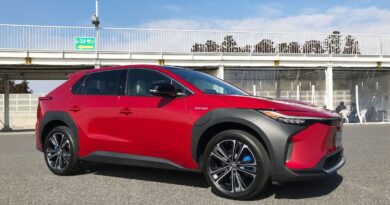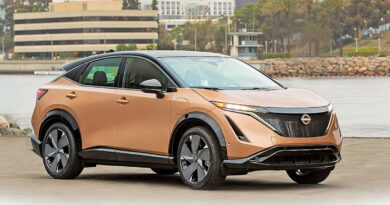Carvana, Vroom and Shift see stock prices, fortunes fall
Online used-vehicle retailers such as Carvana Co. and Vroom Inc., after riding high on consumer and investor interest during the COVID-19 pandemic, are facing a reckoning.
Carvana slashed 2,500 jobs and suspended executive pay after losing $506 million in the first quarter. Vroom tapped a new CEO and said it would consider cutting jobs after reporting a big loss. Shift Technologies Inc. cut its corporate staff by 10 percent last month.
The now-humbled disrupters, which just last year were tormenting franchised dealers with aggressive Super Bowl ads, are seeing their stock prices fall as their losses grow. Rising interest rates and high prices generally — especially for gasoline — are undermining retail demand, while wholesale prices remain high. For companies pushing to grow in a hot market, the first quarter brought a rude awakening.
“You have to plan your infrastructure to support growth over the next year,” said Sharon Zackfia, who covers all three online used-vehicle sellers as an analyst at investment bank William Blair. “And up until January, I don’t think any of these companies were expecting the industry to get as tough as it did as quick as it did.”
Tougher conditions will require cutting back in some areas, as executives prioritize what they need to spend money on this year, she said.
To be sure, the economy is still growing rapidly, the job market is hot and interest rates remain low by historical standards. Public dealership groups, which like many retailers have been emphasizing used-vehicle operations while expanding their digital business, reported robust first-quarter earnings.
But the online retailers find themselves in worrisome territory. Whether they can contain costs and curb losses in the coming months will be crucial, analysts said.
Analysts who cover the companies told Automotive News that this period likely doesn’t represent the beginning of the end for the online used-vehicle retail segment. But for these companies, which have been trying to achieve scale that can give them a competitive advantage, it may be the end of the beginning.
After flexing their skills and vision during the pandemic, they now find themselves needing to take a more measured approach toward growth to preserve cash and build toward consistent profitability.
“This is going to be a long process of slowing down growth and managing costs better,” said Rajat Gupta, senior equity analyst at J.P. Morgan who covers auto retail, including Carvana, Vroom and Shift.
Carvana, the largest of the three, lost $506 million in the first quarter. It sold fewer vehicles than it had planned and earned 23 percent less from each sale than it did a year earlier.
And the company knows demand “probably isn’t getting better in the near term,” said Daniel Imbro, a Stephens Inc. managing director covering the retailer/hardlines sector, which includes Carvana.
Uncertainty about 2022 was an important theme this week when former Carvana employees circulated an email CEO Ernie Garcia apparently sent companywide about the job cuts. In it, Garcia said Carvana’s work force is larger than needed and that the company “can’t be certain growth will rebound quickly enough to bring us back into balance.”
Carvana did a good job of scaling its business over the past two years, when used-car pricing and demand were favorable, Gupta said.
But “the business was not built in a fashion to be prepared to handle a downturn like this,” Gupta said. “I think they grew a little too quickly and built a business for a much higher level of volume. So it’s a little unfortunate that they’re having to lay off people — you never want to do that for a company like this — but I think it is a consequence of the macro slowdown, ultimately.”
In addition, he said, investors and shareholders today are seeking more discipline around costs and free cash flow as interest rates rise.
Carvana spent money in the first quarter to add three more of its own inspection and reconditioning centers. Then this week it finalized its purchase of the ADESA U.S. auction network from KAR Global. Carvana believes that acquisition will give it the capacity to ready an additional 2 million vehicles for sale each year.
But that real estate cost $2.2 billion, and Carvana took on a large chunk of costly debt to fund it. The company borrowed $3.3 billion at 10.25 percent — a higher interest rate than Carvana thought it would need to pay to get the deal done, said Chris Pierce, a Needham and Co. senior analyst who covers Internet services, including Carvana.
It set off alarm bells among investors wary of the pace at which Carvana is burning through cash. Do the math, and it adds a significant expense to Carvana’s income statement — more than $330 million in interest annually for the next five years, Imbro said.
Carvana plans to spend the additional $1 billion on refurbishing the 56 ADESA U.S. sites. For that cost to be worth it, “they need to get these facilities going right now,” Pierce said.
Job cuts are also on the horizon at Vroom after it lost $310.5 million in the first quarter. Vroom listed a “work force reduction” as a key part of its plan to realign the business for more sustainable growth.
Vroom also just shuffled the top leadership who will execute the plan. Tom Shortt, 53, who has been COO since January and previously helmed Walmart’s e-commerce supply chain, stepped in as CEO. Former CEO Paul Hennessy departed for other opportunities, Vroom said. He’s set to take over as CEO of Shutterstock on July 1.
Vroom is experiencing a change in strategy alongside its executive leadership change, said Zackfia, of William Blair, who said more details could surface this month when Vroom holds its investors day. Vroom took a more national than regional focus, she said, which creates more challenges to scale. Company leaders also acknowledged Vroom outgrew its capabilities.
Like Carvana, Vroom will attempt to grow the profit on each vehicle it sells. Vroom’s total gross profit per vehicle sold fell 14 percent in the first quarter to $1,763.
Executives acknowledged that Vroom “fell behind” in handling vehicle titling and registration issues, for which it was fined $47,000 last month. The delays resulted in customers not being able to register their cars before their temporary license plates expired.
“That is an unacceptable outcome for even one single customer, yet alone the many that this has happened to,” Robert Mylod, independent executive chair of Vroom’s board, said during the company’s earnings call this week.
Such issues — plus complaints from customers that the company misrepresented vehicle conditions — are at the center of a lawsuit the Texas attorney general filed against Vroom last month.
Vroom has incurred more fix-it and legal expenses trying to remediate those problems, Mylod said. Addressing them will be part of the new business strategy, he added.
Although their stocks have fallen sharply, no analyst predicted that any of the three companies will fail.
Among them, only Shift has listed a going-concern warning in federal filings, and at least one analyst predicts it has resources to make it through 2023, when the market may have normalized.
Said J.P. Morgan’s Gupta: “Shift, I would say, is the most vulnerable out of the three. … Carvana has a little bit more time because they raised capital recently.”
But “I’m not holding funerals for any of these companies yet,” Zackfia said.
“Carvana’s already the second-largest used-car company in the United States. I’m optimistic that they will remain a viable player and that this will make them stronger,” she said. “You have to figure out how to make your model stronger in times like today, and I have confidence they’ll figure it out. I think the smaller companies are in a tougher position just because of scale. They don’t have the brand recognition that Carvana has.”
Carvana was the first mover in its segment and has built “a very unique business” that continues to have strong growth potential, said Doug Arthur, managing director of Huber Research Partners, who covers the company. The challenge for Carvana is to convert its “growth-at-all-costs” mindset into a focus on growing profitably.
It may take awhile for used-vehicle prices to back off to normal levels, but should that happen, “that’s a much better environment for Carvana,” Arthur said. “A, it will help sales. B, it will help inventory. And C, they can probably manage their buy-to-sell ratio a little bit better on margin.”
Added Arthur: “I’m not worried about the company’s survival.”
Source : Autonews.com




